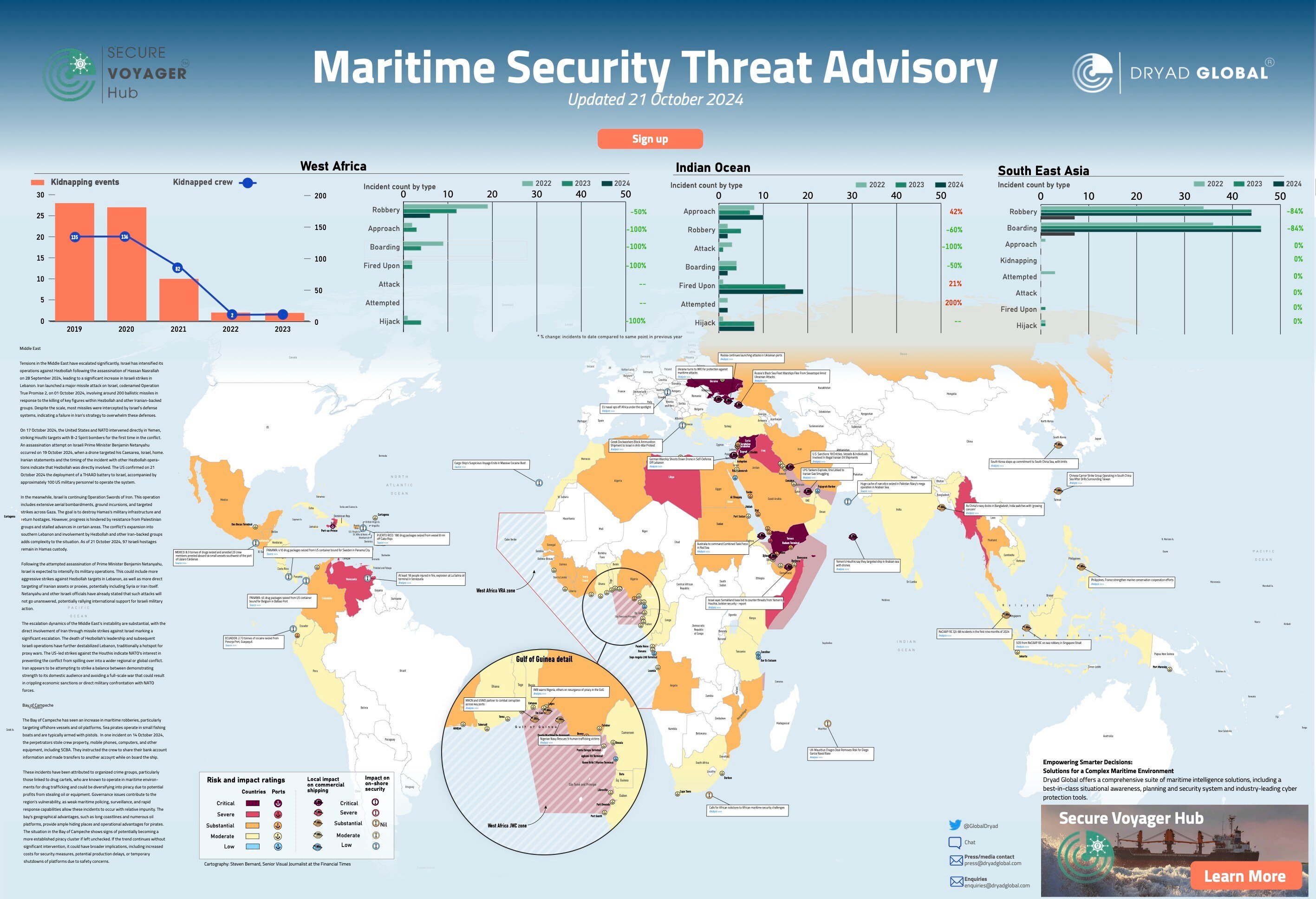Our weekly Maritime Security Threat Analysis (MSTA) is available now. The situation in the Middle East has intensified following the assassination of Hezbollah leader Hassan Nasrallah on 28 September 2024, leading to increased Israeli operations against Hezbollah in Lebanon.
Iran responded with a significant missile strike on Israel on 01 October, dubbed Operation True Promise 2, involving around 200 ballistic missiles, most of which were intercepted by Israel's defense systems. Additionally, an assassination attempt on Israeli Prime Minister Benjamin Netanyahu occurred on 19 October, which is believed to have involved Hezbollah. In response, the US has deployed a THAAD missile defense system to Israel.
At the same time, Israel continues its Operation Swords of Iron, targeting Hamas’s military infrastructure in Gaza while facing resistance from Palestinian groups. The conflict has expanded into southern Lebanon, further complicating the region's dynamics. As of 21 October, 97 Israeli hostages remain in Hamas custody. Israel is expected to escalate its military response, particularly against Hezbollah and Iranian targets.
Concurrently, the US and NATO have intervened in Yemen, striking Houthi targets for the first time with B-2 Spirit bombers. These actions highlight the growing involvement of international powers in the region, with concerns that the conflict could expand further. Iran faces a delicate balance between showing strength to its domestic audience and avoiding direct military confrontation with NATO forces.
In a separate incident, the Bay of Campeche has seen an increase in maritime robberies, particularly targeting offshore vessels and oil platforms. Pirates, often linked to drug cartels, have been stealing equipment and personal items from crews, exacerbating security concerns in the region. Without significant intervention, this area risks becoming a more established piracy hub.






